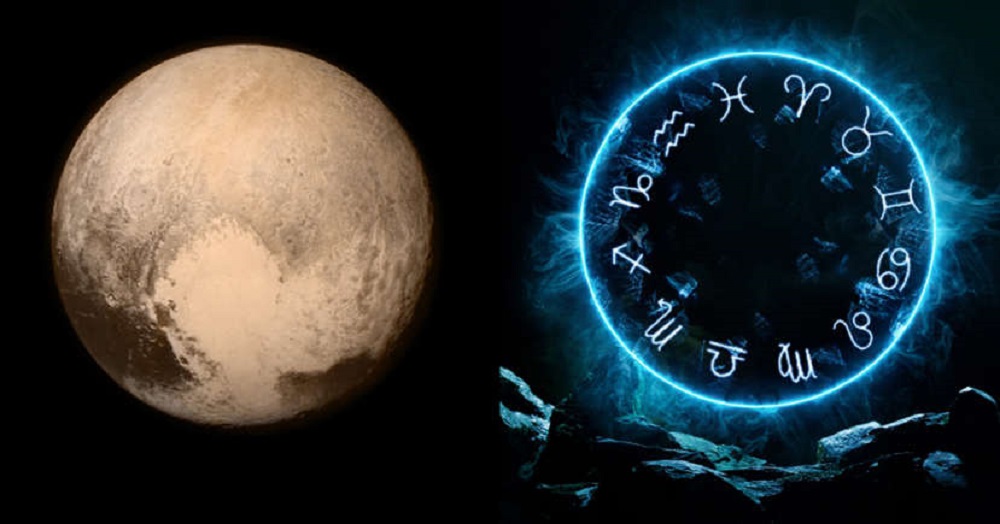Pluto in Aquarius is one of the most transformative astrological events of the decade. Beginning on November 19, 2024, Pluto enters Aquarius, where it will remain until 2043. This cosmic shift signifies a collective evolution in technology, societal structures, and ideals of equality. For each zodiac sign, Pluto’s transition into Aquarius impacts a unique area of life, bringing opportunities for transformation and renewal. The Power of Pluto and What It Represents Pluto governs themes of transformation, power, and rebirth. It symbolizes the process of shedding old layers to reveal new potential. Often called the "Lazarus planet," Pluto confronts us with our shadow side, encouraging growth through challenges and introspection. Its influence on the collective psyche profoundly...
Scientists are on the verge of uncovering potential signs of life beyond Earth, but first, they need to pinpoint where to look. This journey begins with identifying planets that possess atmospheres, a crucial element for sustaining life. Recent discoveries suggest that a concept called the "cosmic shoreline" could guide astronomers in determining which distant worlds are most likely to retain their air. Why Atmospheres Matter in the Search for Alien Life In the late 1970s, NASA’s Voyager and Pioneer 11 spacecraft visited Titan, Saturn’s largest moon, revealing its dense atmosphere of nitrogen and methane. While most moons lack significant atmospheres, Titan’s thick gaseous layer raised a fundamental question: Why do some celestial bodies hold onto their...
Scientists have used a powerful combination of astronomical data to create a "cosmic CT scan" of the universe. This scan has allowed researchers to track how matter has evolved over billions of years. Surprisingly, their findings show that the universe is less clumpy than expected, challenging current models. The study combined data from two major sources: 1. The Atacama Cosmology Telescope (ACT), which captures ancient cosmic light. 2. The Dark Energy Spectroscopic Instrument (DESI), which maps the structure of modern galaxies. By layering these data sets, researchers created a detailed timeline of the universe’s evolution. Mapping the Universe’s Evolution Scientists have long studied how gravity shapes cosmic structures. This new research provides a clearer picture of...
Astrology has seen a significant resurgence, attracting millions of users worldwide. Platforms like Co-Star and AstroTalk have made astrology easily accessible to a global audience. Co-Star, based in the U.S., boasts over 30 million users, while AstroTalk connects 40,000 astrologers with 80 million customers across India. Allied Market Research predicts that spending on astrology-related services will increase from $12.8 billion in 2021 to $22.8 billion by 2031. A Harris Poll survey in 2024 revealed that 70% of Americans either “somewhat” or “strongly” believe in astrology. This growing interest stems from various factors, including the decline of organized religion and the pressures of modern life. During the COVID-19 pandemic, searches for "astrology" on Google reached a ten-year...
Food astrology delves into the symbolic connections between planetary energies and the foods we consume. This fascinating system links specific ingredients to celestial bodies, suggesting that certain foods can influence emotions, health, and personal traits. Rooted in ancient traditions, food astrology offers a unique perspective on nutrition by aligning dietary habits with planetary influences. The Moon’s Role in Food Astrology In astrology, the Moon governs emotions, comfort, and nourishment. Lunar foods are often hydrating, soothing, and linked to familial and cultural traditions. Ingredients like cucumbers, melons, milk, and seafood resonate with the Moon’s energy. These foods nurture emotional well-being, making them ideal for cultivating comfort and grounding. If your Moon is in challenging placements like Capricorn...
The Gemini star pattern is one of the most fascinating and recognizable sights in the night sky. Known for its twin-like stars, Castor and Pollux, this celestial marvel has captured the imagination of stargazers for centuries. Whether you are an amateur astronomer or a casual sky-watcher, understanding where to find Gemini, its rich history, and the myths surrounding it can make your stargazing experience unforgettable. Where Is the Gemini Star Pattern? The Gemini star pattern dominates the northern hemisphere's winter sky, making it a seasonal favorite. Covering 514 square degrees, it is the 30th largest constellation, sitting comfortably in the second quadrant of the Northern Hemisphere. Gemini is best seen during clear winter nights, between December...
Pluto in Aquarius is one of the most transformative astrological events of the decade. Beginning on November 19, 2024, Pluto enters Aquarius, where it will remain until 2043. This cosmic shift signifies a collective evolution in technology, societal structures, and ideals of equality. For each zodiac sign, Pluto’s transition into Aquarius impacts a unique area of life, bringing opportunities for transformation and renewal. The Power of Pluto and What It Represents Pluto governs themes of transformation, power, and rebirth. It symbolizes the process of shedding old layers to reveal new potential. Often called the "Lazarus planet," Pluto confronts us with our shadow side, encouraging growth through challenges and introspection. Its influence on the collective psyche profoundly...
Scientists are on the verge of uncovering potential signs of life beyond Earth, but first, they need to pinpoint where to look. This journey begins with identifying planets that possess atmospheres, a crucial element for sustaining life. Recent discoveries suggest that a concept called the "cosmic shoreline" could guide astronomers in determining which distant worlds are most likely to retain their air. Why Atmospheres Matter in the Search for Alien Life In the late 1970s, NASA’s Voyager and Pioneer 11 spacecraft visited Titan, Saturn’s largest moon, revealing its dense atmosphere of nitrogen and methane. While most moons lack significant atmospheres, Titan’s thick gaseous layer raised a fundamental question: Why do some celestial bodies hold onto their...
1 / 6
Here’s Everything You Need to Know About Cosmic Rays
Cosmic rays, mysterious particles from the cosmos, have captivated scientists and astronomers alike with their enigmatic origins and profound implications for understanding the universe. These particles, traveling at nearly the speed of light, bring tales from the far reaches of space right to our doorstep.
What Are Cosmic Rays?
Cosmic rays are not rays at all but rather incredibly fast-moving particles that originate from outer space. Predominantly made up of protons, these particles are remnants of atoms stripped of their electrons, revealing their bare nuclei. Earth is bombarded daily by trillions of these particles, though most are harmlessly deflected by our planet’s atmosphere and magnetic field. When cosmic rays do collide with atmospheric particles, they generate a cascade of secondary particles that can reach the ground, providing scientists with valuable data about their journey through space.

Kjpargeter | Freepik | Cosmic rays are not rays but incredibly fast-moving particles originating from outer space.
The Historical Path to Discovering Cosmic Rays
The quest to understand cosmic rays began in earnest in the early 20th century, with pioneering experiments that revealed their existence and extraterrestrial origin. In 1912, Victor Hess made a groundbreaking balloon flight that demonstrated increased radiation with altitude, pointing to a source beyond Earth’s atmosphere. This discovery earned him the Nobel Prize and paved the way for further research. Nobel laureate Robert Millikan coined the term “cosmic ray” itself in 1925, although we now understand these phenomena to be particles rather than rays.
The Origins and Sources of Cosmic Rays
Identifying the origins of cosmic rays poses a significant challenge due to the deflection of these charged particles by magnetic fields in space. However, scientists can infer the cosmic events capable of producing such high-speed particles by measuring their energies. Supernovas, black holes, neutron stars, and even collisions of galaxies are all potential cosmic factories churning out cosmic rays. These particles serve as messengers, offering clues about the violent processes that govern the cosmos and the universe’s structure.

Pixabay | Pexels | Earth is bombarded daily by trillions of these particles, though most are harmlessly deflected by our planet’s atmosphere and magnetic field.
Cosmic Rays as Probes of the Universe
Cosmic rays have proven instrumental in deepening our understanding of the universe. By studying these particles, scientists have discovered new subatomic particles like the positron and the muon, expanding the field of particle physics. Moreover, cosmic rays have provided insights into the chemical composition of the universe and the dynamic processes occurring around supermassive black holes and during stellar explosions.
Detecting Cosmic Rays
Scientists employ various detection methods to study cosmic rays on the ground and in space. Ground-based observatories like the Pierre Auger Observatory in Argentina and the High Altitude Water Cherenkov Observatory in Mexico are crucial in tracking these particles. Additionally, instruments aboard balloons and spacecraft, such as NASA’s Parker Solar Probe and the Voyager satellites, capture cosmic rays in their detectors, offering a clearer picture of cosmic radiation across different environments.

Wirestock | Freepik | Scientists employ various detection methods to study cosmic rays on the ground and in space.
The Unresolved Mysteries of Cosmic Rays
Despite over a century of research, many questions about cosmic rays still need to be answered. Their exact sources, the mechanisms behind their acceleration to extreme energies, and their potential impacts on climate and planetary systems continue to elude full understanding. The high-energy cosmic rays, in particular, challenge our current knowledge, as their origins could be as exotic as starburst galaxies or the tumultuous regions surrounding supermassive black holes.
While largely benign to life on Earth due to our protective atmosphere and magnetic field, cosmic rays pose significant challenges to space travel and the operation of spaceborne equipment. As we venture further into space, understanding and mitigating the effects of cosmic rays will be crucial for astronauts’ safety and the success of interplanetary missions.
The study of cosmic rays stands at the intersection of particle physics, astrophysics, and cosmology, offering a unique perspective on the universe’s most energetic phenomena. As technology advances and our observational capabilities improve, the secrets of cosmic rays are slowly being unraveled, promising to shed light on the darkest corners of the universe and the most energetic events in cosmic history.
you may like
taboola
taboola
taboola
More from
You May Also Like
in the same category
1 / 3











